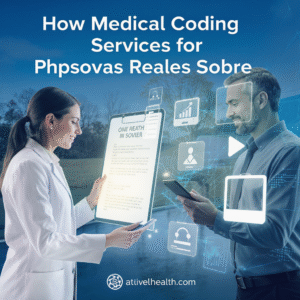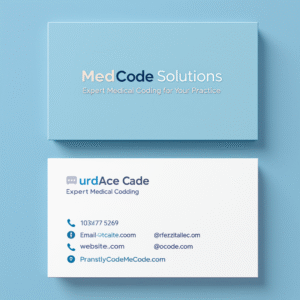Navigating a Payer Audit: A Survival Guide for Practices
Payer Audit
Payer Audit
Healthcare practices across the United States face an increasing number of payer audits each year. These comprehensive reviews of billing practices, medical records, and compliance procedures can feel overwhelming, but with proper preparation and understanding, practices can navigate them successfully while maintaining their reputation and financial stability.

Understanding Payer Audits
A payer audit is a systematic examination conducted by insurance companies, Medicare, Medicaid, or other third-party payers to verify that healthcare services were properly documented, medically necessary, and billed according to established guidelines. These audits serve multiple purposes: ensuring appropriate use of healthcare dollars, identifying potential fraud or abuse, and maintaining the integrity of reimbursement systems.
Payer audits can be triggered by various factors, including statistical anomalies in billing patterns, complaints from patients or whistleblowers, random selection processes, or specific focus areas identified by the payer. Understanding these triggers helps practices recognize potential risk areas and implement preventive measures.
The audit process typically involves several phases: initial notification, record requests, review and analysis, preliminary findings, and final determination. Each phase presents unique challenges and opportunities for practices to demonstrate compliance and address concerns proactively.
Types of Payer Audits
Healthcare practices may encounter several different types of audits, each with distinct characteristics and requirements. Prospective audits occur before payment is made, requiring prior authorization or pre-payment review. These audits can delay reimbursement but offer opportunities to address issues before payment problems arise.
Retrospective audits take place after claims have been paid and services rendered. These comprehensive reviews examine past billing practices and may result in recoupment demands if discrepancies are identified. Post-payment audits are the most common type and can cover extended periods, sometimes spanning several years.
Focused audits target specific areas of concern, such as particular procedure codes, diagnosis combinations, or provider specialties. These audits often reflect industry-wide concerns or emerging compliance issues that payers want to address systematically.
Comprehensive audits examine all aspects of a practice’s operations, including billing practices, medical record documentation, compliance programs, and administrative procedures. While more extensive, these audits provide opportunities to demonstrate overall program integrity and identify areas for improvement.

Preparation Strategies
Successful audit navigation begins long before the audit notice arrives. Practices should establish robust internal audit programs that regularly review documentation practices, coding accuracy, and compliance procedures. These proactive measures help identify and correct potential issues before external auditors discover them.
Documentation serves as the foundation of audit defense. Medical records must clearly support the services billed, demonstrate medical necessity, and comply with applicable documentation standards. Practices should implement regular training programs to ensure all staff members understand proper documentation requirements and maintain consistent practices across all providers.
Coding accuracy requires ongoing attention and education. Regular reviews of coding practices, updates on guideline changes, and periodic assessments of coder performance help maintain high standards and reduce audit risks. Practices should also establish clear policies for handling coding questions and uncertainties.
Compliance programs should include written policies and procedures, regular training sessions, internal monitoring systems, and corrective action protocols. These programs demonstrate good faith efforts to maintain compliance and can significantly impact audit outcomes.
Technology systems play crucial roles in audit preparation. Electronic health record systems should be configured to support proper documentation practices, and billing systems should include appropriate edit checks and monitoring capabilities. Regular system audits help ensure technology supports compliance efforts rather than creating additional risks.
The Audit Process
When an audit notice arrives, practices should respond promptly and professionally. Initial responses set the tone for the entire audit process and can significantly impact auditor perceptions. Designated staff members should coordinate all audit communications to ensure consistency and completeness.
Record requests typically form the first substantive phase of the audit process. Auditors may request medical records, billing documentation, policies and procedures, and other supporting materials. Practices should respond completely and timely, ensuring all requested materials are provided in organized, legible formats.

During the review phase, auditors examine submitted materials against applicable standards and guidelines. Practices may have opportunities to provide additional clarification or supporting documentation during this phase. Maintaining open communication channels with auditors helps address questions promptly and demonstrates cooperation.
Preliminary findings represent auditors’ initial conclusions based on their review. Practices typically have opportunities to respond to these findings, providing additional information or alternative interpretations. These responses require careful preparation and should address each finding specifically and thoroughly.
Exit conferences provide opportunities for practices to discuss findings directly with auditors and clarify any remaining questions. These meetings should be approached professionally, with designated spokespersons prepared to address audit findings knowledgeably and confidently.
Managing Documentation Requests
Effective documentation management can significantly impact audit outcomes. Practices should establish clear procedures for responding to audit requests, including designated responsible parties, review processes, and quality control measures.
Medical records must be complete, legible, and clearly support the services provided. Missing documentation often results in claim denials or recoupment demands, regardless of whether services were actually provided. Practices should implement systems to ensure complete documentation before claim submission.
Supporting documentation may include referral letters, diagnostic test results, treatment plans, and follow-up notes. All relevant materials should be included in audit responses to provide complete pictures of patient care and medical decision-making processes.

Organization and presentation of audit materials demonstrates professionalism and facilitates auditor review processes. Clear labeling, logical organization, and complete indexing help auditors navigate submitted materials efficiently and may create positive impressions.
Electronic submission processes are increasingly common and offer advantages including faster transmission, reduced copying costs, and improved organization capabilities. Practices should familiarize themselves with electronic submission requirements and ensure their systems can produce required formats.
Common Audit Findings
Understanding common audit findings helps practices focus their preparation efforts and address potential vulnerabilities proactively. Documentation deficiencies represent the most frequent audit finding, including incomplete records, illegible notes, and missing required elements.
Medical necessity issues arise when auditors question whether provided services were appropriate for documented conditions. Clear documentation of medical decision-making processes and supporting rationale helps address these concerns.
Coding accuracy problems include upcoding, unbundling, and inappropriate modifier usage. Regular coding reviews and ongoing education help minimize these issues and demonstrate good faith compliance efforts.
Billing irregularities may include duplicate billing, inappropriate billing practices, and failure to follow specific payer requirements. Robust billing system controls and regular monitoring help identify and prevent these problems.
Compliance program deficiencies involve inadequate policies, insufficient training, or poor monitoring systems. Well-documented compliance programs with evidence of active implementation help address these findings.
Response Strategies
Developing effective response strategies requires understanding audit findings, applicable regulations, and available options. Practices should carefully analyze each finding and develop specific responses addressing auditor concerns.
Factual corrections involve identifying and correcting obvious errors in auditor analyses or conclusions. These responses require clear documentation and specific references to supporting materials or applicable guidelines.
Alternative interpretations may be appropriate when audit findings involve subjective judgments or complex regulatory interpretations. These responses should include detailed explanations and supporting references to relevant authorities.
Additional documentation may address findings based on incomplete information. Practices should ensure all relevant materials are provided and clearly explain how additional information impacts auditor conclusions.
Educational approaches can be effective when audit findings reflect misunderstandings of practice operations or clinical procedures. Clear explanations of standard practices and clinical rationale may help resolve auditor concerns.
Settlement negotiations may be appropriate in complex situations involving significant potential recoupment amounts. These discussions should involve experienced legal counsel and focus on achieving fair resolutions that consider all relevant factors.
Financial Impact Management
Audit outcomes can have significant financial implications for healthcare practices. Understanding potential impacts and developing management strategies helps minimize disruption to practice operations and financial stability.
Recoupment demands require immediate attention and careful analysis. Practices should verify calculation accuracy, review applicable appeal rights, and consider payment options if amounts are determined to be owed.
Cash flow management becomes critical during audit processes, particularly when recoupment demands are involved. Practices should develop contingency plans and consider available financing options to maintain operational stability.
Insurance coverage may provide protection against certain audit-related costs and liabilities. Practices should review their coverage options and ensure appropriate protection is in place before audit issues arise.
Legal representation may be necessary in complex audit situations or when significant amounts are involved. Early consultation with experienced healthcare attorneys can help practices understand their rights and develop effective strategies.
Financial planning should account for potential audit costs and outcomes. Regular reserves and appropriate insurance coverage help practices weather audit-related financial impacts without compromising patient care or operational stability.

Prevention and Ongoing Compliance
The most effective audit strategy involves preventing problems before they occur. Comprehensive compliance programs, regular internal audits, and ongoing education create strong foundations for audit success.
Staff training programs should address documentation requirements, coding guidelines, billing procedures, and compliance expectations. Regular updates and refresher sessions help maintain high standards and address evolving requirements.
Internal monitoring systems should identify potential problems early and provide opportunities for corrective action before external audits occur. These systems should examine coding accuracy, documentation quality, and billing practices on regular bases.
Corrective action protocols should address identified problems promptly and thoroughly. Documented corrective actions demonstrate good faith compliance efforts and may influence audit outcomes positively.
Industry participation through professional organizations, educational programs, and peer networking helps practices stay current with evolving requirements and best practices. Active engagement demonstrates commitment to compliance and professional standards.
Conclusion
Successfully navigating payer audits requires comprehensive preparation, professional responses, and ongoing commitment to compliance excellence. While audit processes can be challenging, practices that maintain robust compliance programs, accurate documentation practices, and appropriate coding procedures typically achieve favorable outcomes.
The key to audit success lies in treating compliance as an ongoing process rather than a reactive response to external scrutiny. Practices that invest in comprehensive compliance programs, regular training, and internal monitoring systems position themselves for success regardless of audit circumstances.
Remember that payer audits, while stressful, represent opportunities to demonstrate practice integrity and commitment to appropriate patient care. Approaching audits with confidence, professionalism, and thorough preparation helps ensure positive outcomes while strengthening overall compliance capabilities.
Healthcare practices that view audits as normal business processes and prepare accordingly will find themselves better positioned to maintain successful operations while meeting all applicable regulatory and contractual requirements. The investment in comprehensive compliance programs pays dividends not only during audit processes but in improved operational efficiency and reduced overall risk exposure.



